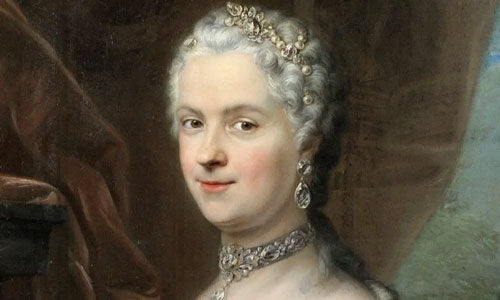
The History of Jewelry Development Ⅱ
Share
Then we move on to the journey of jewelry from the Middle Ages.
Middle Ages
With the fall of the Western Roman Empire, mankind entered the dark Middle Ages. The Christian Church began a long rule that imprisoned ideological civilization for 1,000 years. In the 13th century in Europe, laws restricting the wearing of jewelry by civilians began, which was the mentality of the ruling class at that time wishing to use jewelry to differentiate classes. In the two hundred years after this, the era of noble royal jewelry was opened, and many crowns with unique shapes appeared.
Medieval jewelry is mainly based on religious themes, and the materials are mainly gold, silver and enamel. Plantars are not used much. Jewelry was not used to dress up at that time, but to participate in important celebrations. Because of the rule that "the neck and shoulders cannot be exposed", accessories such as necklaces, bracelets, and collars almost disappeared at that time.
Renaissance
In the late 16th century, the Renaissance movement that emerged from Italy swept across Europe, and the decorative art of jewelry also entered a period of harmonious unity of the body, clothing and accessories. At that time, people believed that jewelry should outline the natural beauty of the human body, so there was an elegant style that highlighted the natural curves of the human body. With the lifting of the ban on the human body, people show elegant necks, wear necklaces decorated with pearls and diamonds, loose long wrapped hair, and match with beautiful headdresses and earrings made of feathers and stones.
From this period, the wearing of jewelry gradually began to have a gender trend, and the symbol of class was less. Women wear earrings, brooches, necklaces and other beautiful jewelry, while men only wear belts, rings and bracelets.
18th-19th Century
It is no exaggeration to say that this period is known as the Carnival of Jewels. The discovery of diamond mines in Brazil in 1725 greatly stimulated and developed European research on diamond polishing. Before that, people thought that the most precious materials were pearls and gold, and diamonds could only be embellished with their faces facing the sky and the earth. As the rose-cut method of gemstones matures, rubies and sapphires finally begin to reveal their true colors, and become precious gems worth thousands of gold.
Victoria
Victorian style is a wind of artistic restoration in the European continent during the reign of Queen Victoria of England. Victorian-style art inherits and reinterprets the classical, abandoning the aesthetics of rational machinery, which is a reshaping of the definition of beauty by human beings. Because the Queen loves jewelry, British jewelry design and art flourished unprecedentedly during her reign, leaving behind a number of beautiful works for future generations.
Victorian style jewelry is mainly manifested as follows:
- Victoria is the prosperous period of Britain, and the jewelry shape tends to be complicated and gorgeous. The ethereal elements of lace are widely used, and the beauty of women's elegance and the beauty of China's beauty, with the help of the influence of the sun never sets empire;
- People who carry extremely fine grains pay more attention to workmanship and design than the gem itself, and well-cut diamonds often As a companion stone, it is widely used in jewelry. The luxury court style of romanticism can be felt in the jewelry of this period.
Napoleon III style
Corresponding to the late Victorian period in England was the period of Napoleon III in France. Jewelry design advocates romantic feelings, and natural bouquets and animal elements are introduced into jewelry design inspiration. In terms of material, pearls were regarded as the top grade, and they appeared in palace jewelry of that period.
The largest jewelry collector at that time was the French royal family, and Queen Eugenie was a jewelry fan. Through the balance and symmetry of the design, the royal jewelry frequently uses large gems, and strives for excellence in workmanship, expressing the rich and hemp atmosphere of the empire.
During the Napoleon III period, with the expansion of the empire, art also covered multiculturalism, such as naturalism, Greek style, Egyptian style, Etruscan style, Assyrian style, ferry style, Gypsy style, etc. Jewelry in this period are clearly manifested in.
Above is part two of jewelry history, next article will introduce the history of jewelry after 19th century.
